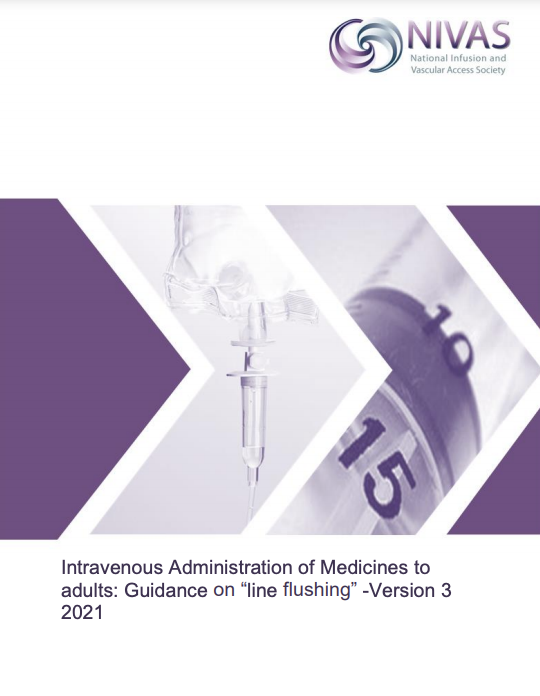
Our colleagues at NIVAS (National Infusion and Vascular Access Society) have shared their latest guidance on line flushing for IV administration and raise a number of important risks for all staff involved in the use of infusion pumps, IV bolus and gravity infusions. There is also the potential risk of bolus effect or incompatibilities with the residual medicine in infusion set, if the same set is subsequently used to administer other infusions. In the first instance infusion sets should NOT be continuously used for the administration of different medicine solutions, a new infusion set should be used for each new medicine. Infusion sets can be used continuously for fluid infusions such as sodium chloride 0.9% in line with local policy.
To avoid unintended bolus/push administration of medicine from the dead space in an infusion set, care should be taken to ensure the rate of administration of a flush or subsequent infusion is the same as the rate of administration of the medicine. An incident reported to the NRLS describes an infusion of potassium chloride in sodium chloride 0.9% that was changed for a bag of Hartmann’s solution. Because the Hartmann’s solution was infused faster than the potassium chloride infusion it replaced, the patient received an unintended push of the residual potassium solution.
